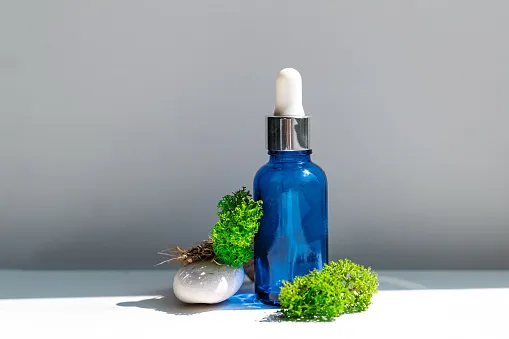Pads and Tampons: Advantages and Disadvantages
Pads and tampons are materials that are specifically used for absorbing menstrual blood. Certainly, pads are not strange to ladies as they are readily available at nearby stores, unlike tampons that are only known to a few people.
Gone are the days when ladies use pieces of cloth to absorb their menstrual blood. This type of cloth is usually reused after wash but with the advent of pads and tampons, ladies can now comfortable undergo their menstrual period without having to worry about stains.
Although tampons and pads are made of similar materials each has its unique characteristics that make them more preferable to the user. There are other products designed for this purpose, pads and tampons are still the most sought after. This is why we have given descriptions, advantages, disadvantages, and the similarities between pads and tampons.
Similarities of Pads and Tampons
Below are the major characteristics that pads and tampons have in common.
Both pads and tampons are safe to use.
Pads and tampons are utilized for absorbing the menstrual blood.
Pad
Pads are a very common absorbent material used during menstruation. Its outer surface is coated with glue so it can stick to the underwear. This makes it comfortable and easy to move around. For a light flow, it can be used for a longer duration compared to a heavy flow. For the sake of preventing infection, it shouldn’t exceed four hours before removal.
Advantages of Using Pad
Easy to use
Pad is very easy to use just by gumming it to the underwear. This makes it to be the easiest to put on between pads and tampons. As for tampons which are very difficult to use, they might be painful sometimes.
Size
The size of the sanitary pad makes it suitable for a heavy flow even though there is variation in size. It is very easy to remove thereby making replacement easy.
Prevent the Risk of Toxic Shock Syndrome
There is no risk associated with pad, especially in the case of toxic shock syndrome. Research has proven that ladies who use tampons are at greater risk of toxic shock syndrome
Disadvantages of Using Pad
It is apparent and thick
It doesn’t require an insertion
It can be worn throughout the night
It is not suitable for swimming
Tampon
Tampons are materials made of ray, cotton, or a combination of both materials which are modified into a cylindrical shape to fit into the vagina during menstruation. The purpose of using a tampon is to absorb the menstrual blood that is released from the uterus.
It is usually placed in the vagina with an applicator or a bare hand. Tampon also has a dangling string that is meant to be pulled to remove the tampon from the vagina. In the united state, the tampon was reported to be used by ladies as it is the most popular menstrual product.
The food and drug administration disagrees with the reuse of tampons to reduce the risk of infection and should not exceed the right hours of use before its removal from the vagina.
Disadvantages of Using Tampons
Promote Good Personal Hygiene
The use of tampons won’t allow menstrual blood to smell since it doesn’t come out of the vagina.
Bloodstains can attract hepatitis infection and with the use of a tampon, bloodstain will be minimal.
Suitable With Any Form of Underwear
You don’t need to be concerned about the type of underwear that goes with it since it would be inserted into the vagina, unlike the pad that would be glued to the underwear.
Prevent Stain
The only reason why your underwear can get stained is if the tampon is not changed early or there is extra heavy flow. With normal flow, there is a guarantee of being free of stains
Long-Lasting
A tampon can last long in the sense that it can absorb a huge volume of blood but notwithstanding it should not be used for too long to prevent vagina infection.
Suitable For All Flow
There is a high tendency that your underwear won’t get stained with period blood. Unlike pad that can easily get stained if not replaced immediately when soaked. There won’t be anything like disgrace associated with bloodstain
Easily Movable
With a tampon, you don’t have to worry about it bulging out of your undies as it is deeply embedded in the vagina. It is easy to move around and also reduces the feeling of a wet pad on your lap. Even while swimming, it is invisible.
Disadvantages of Using Tampons
Risk of Toxic Shock Syndrome
Tampons are a material introduced into the vaginal from an external source and this can increase the risk of vaginal infection especially when the tampon is contaminated. Infection in the body can pose an individual infection.
If the bacteria causing an infection are more than what the body can resist it can result in toxic shock syndrome. Signs of toxic shock syndrome are fatigue, fever, diarrhea, and vomiting. The tampon used shouldn’t exceed four hours.
Vagina Irritation
As a tampon is meant for absorbing the menstrual blood in the vagina, it keeps the vagina dry. Dryness of the vagina can result in irritation which is also a risk of infection in the vagina. Ensure that the tampon is not left in the vagina for too long especially at night to prevent the excessive dryness of the vagina.
Not Suitable For Bedtime
It is not advisable to use a tampon while going to bed at night because toxic shock syndrome can occur when a tampon is left in place for a longer period. It is better to replace it with a pad at night.
Precautions When Using Pads and Tampons
1. Comply with the method of usage and disposal of pads and tampons as it is not supposed to be disposed of abnormally within the surroundings.
2. To prevent vagina irritation and infection, pads and tampons should be replaced within four to six hours of their usage.
3. While using tampons, if uncomfortable you can change to pads.
Read Also: Watery Discharge: Feels Like I Peed Myself
Conclusion
Whether you choose to use a pad or tampon, the most important thing is that you maintain proper hygiene throughout that period. If you are confused about which to use, you can decide to use a tampon for the heavy flow of blood and a pad for the light flow of blood. Make sure to follow the directions of use and dispose of appropriately.






